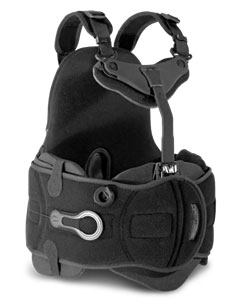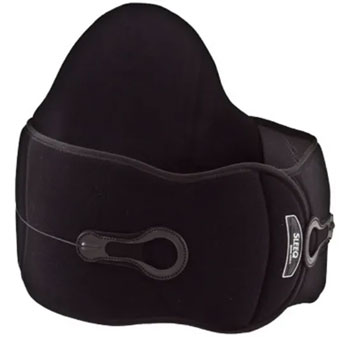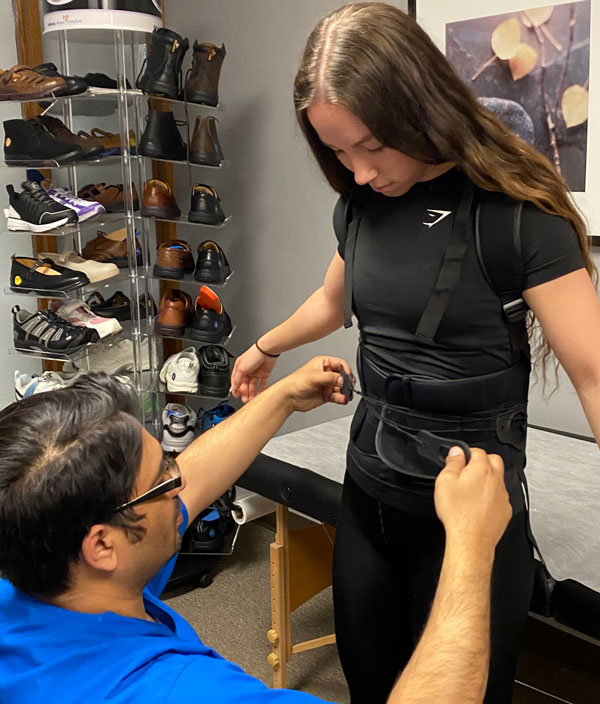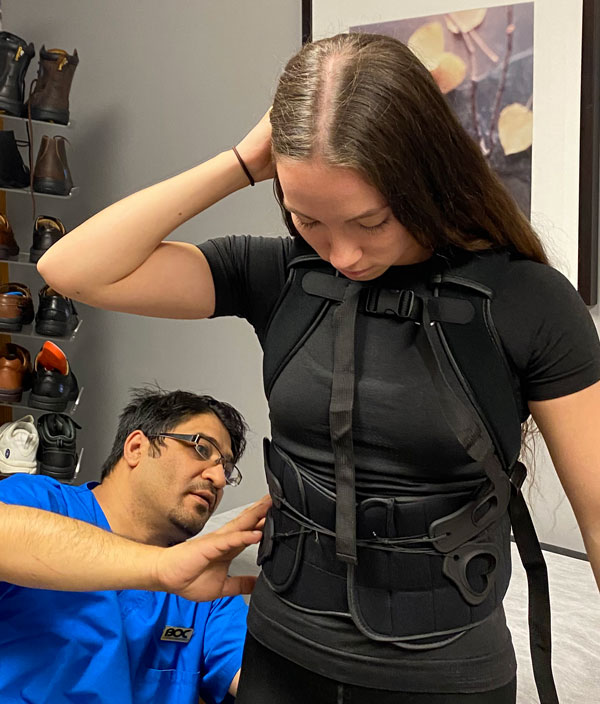HELPING YOU NAVIGATE YOUR MEDICAL SUPPLY NEEDS
BACK BRACING

Thusane SLEEQ MAX
Universal TLSO
Thusane SLEEQ MAX combines the innovative SLEEQ universal brace platform with the superiority of Townsend rigid brace designs.
- Patented InvisAdjustTM universal sizing technology
- Rigid tri-planar control
- Steel sternal bar assembly
- Easy to apply & wear
- Full-circumference shell design
- Steps down to LSO to accommodate patient recovery

SLEEQ AIR
Universal LSO Brace
SLEEQ Spinal braces offer a thinner, lighter, more breathable design. Effective support from a brace has never felt so comfortable.
- Patented InvisAdjustTM universal sizing technology
- Breathable open-cell foam padding
- Self-molding ventilated support panels
- Integrated/removable anterior panels
- Adult and pediatric applications fit 22″ to 52″ waists
- Same standard compression and support as SLEEQ
Using a Brace: Advantages, Myths & Advice
Should I wear one? Will my muscles waste away? Do I become dependent on wearing it? Can I drive with it? Do I wear it all the time?
Conditions where a back brace may be useful:
- Sprain /strain – acute
- Post-operative support: discectomy, fusion, laminectomy
- Facet Syndrome
- Instability: chronic or traumatic
- Bulging or herniated disc
- Spinal Stenosis
- Fracture management
- Deconditioned or postural back pain
- Degenerative Disc Disease
Types of Back Braces:
Many back braces are on the market today: good quality, bad quality, expensive ones, inexpensive ones. Braces for different back parts: mid-spine and lower lumbar spine, and the tailbone or sacrum.
There are also many different designs, using different materials such as elastic, soft plastic, hard plastic metal, Velcro, and laces.
It is important to find a back brace that:
- Fits you well
- Is comfortable
- Feels supportive
- Perhaps gives you some pain relief
Advantages & benefits of using a back brace:
When using most back braces today, they will have a compression strap that pulls the brace snugly around you. Tightening the belt or straps causes compression to the core musculature. Resulting in an overall decrease in the volume of the intra-abdominal soft tissue. This decrease in the volume of soft tissue acts as a STABILIZER directly surrounding the spine.
Many back injuries or back conditions end up in a revolving circle of inflammation and muscle spasms due to an acute injury or chronic illnesses. Although the causes of back pain are varied. Bracing is a good choice for conservative treatment because of the anatomy and function demanded of our spinal column.
When there is back pain (no matter what the cause), the reaction of the spinal musculature is to contract into an involuntary spasm or voluntary contraction of the muscles to protect the injured or inflamed joint or soft tissue structure(s). The muscles often go into “overdrive” with good intentions of protecting the spine. In effect, what happens is the vicious circle of pain and spasm begins. There are several ways to break into that vicious circle: medication, physiotherapy (including ice, heat, modalities, stretching, strengthening, manual therapy, etc.) And lastly, as an external stabilizer: a back brace.
Using a back brace allows the core muscles supporting the spine to relax and not be in “overdrive protection mode “all the time. When this happens, you can get up from sitting or lying down and move around more than you would with a back in spasm.
The other significant advantage that a back brace provides is PROPRIOCEPTION.
According to Dictionary.com, the definition of proprioception is The unconscious perception of movement and spatial orientation arising from stimuli within the body itself. In humans, these stimuli are detected by nerves within the body and the semicircular canals of the inner ear. The back brace provides external proprioception to the person wearing it, allowing them to move, sit, and maintain a better posture while recovering from their injury.
Myths:
1) Weakens muscles:
Although this is something you often hear, wearing a back brace most likely only causes weakness if you put the back brace on, lie down, and do nothing for long periods. In fact, put quite simply, if putting a back brace on allows you to be up walking for more extended periods and doing activities that you would not be able to do otherwise, this is a positive move towards recovery.
The one thing that is very important when using/wearing a back brace is that you follow the EXERCISE PROGRAM for strengthening and stretching by your Health Care practitioner. Keeping the Core musculature that supports the spine strong and flexible is essential whether your back is injured or not. The Exercise program becomes VITAL when wearing a back brace.
2) Rely on the back brace forever (addicted to wearing a back brace):
Once again, this myth returns to the importance of maintaining your core musculature by keeping an exercise program. If you wear the back brace and allow the back brace to do ALL the work ALL of the time, then you are asking for trouble. Which exercise, how often, etc., would be best advised by your health care practitioner?
Advice: There is a place for back bracing for anyone experiencing back pain. Professionally fit back braces offer a safe, non-invasive to treat a current back injury or to prevent a chronic condition from intensifying. Professional guidance by a health care practitioner is advisable for your specific back condition regarding the amount of time worn, exercises, etc.
There are many back braces to choose from; choose carefully and look for good quality. Wearing the back brace can assist in healing, decrease the chance of further injury, help control pain, support weakened muscles, and promote good posture. It will not cure you but will help on so many levels. Try several on. Don’t overuse it but also don’t underuse it. Take advantage of what today’s high-quality back bracing can do for you!
CUSTOM FITTING


